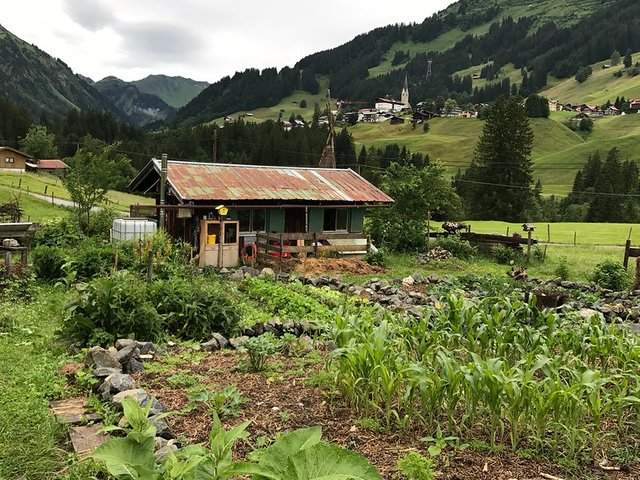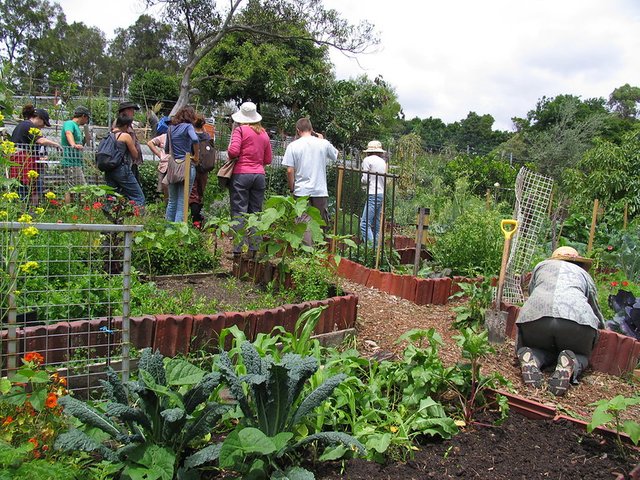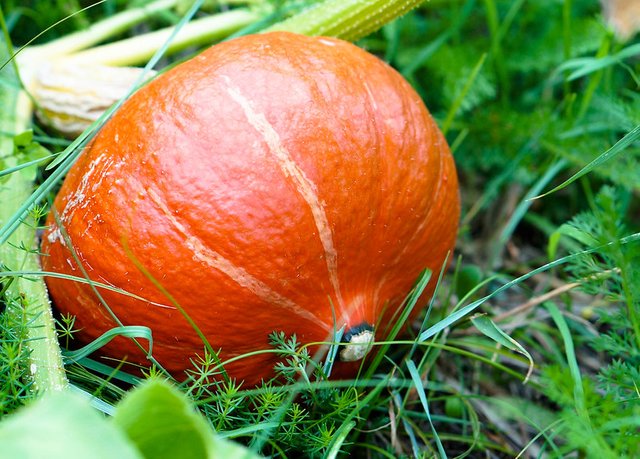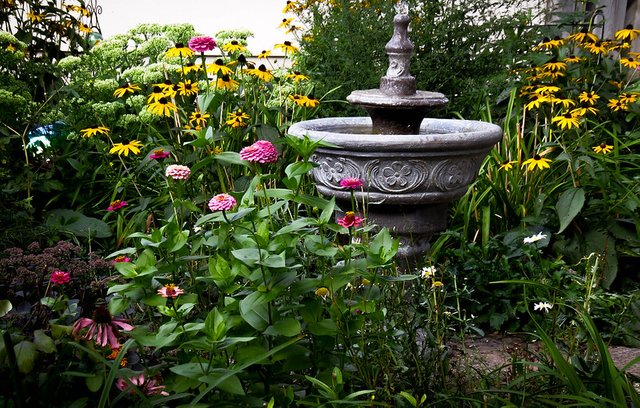Permaculture - Liquid composts, solutions, infusions, decoctions, extracts (Lesson 5 + mini contest)
Intro
As a person who loves permaculture and learns about it for years, I have decided to share with you all my knowledge gained during the volunteers on many farms from Poland and Spain to Chile and Paraguay and during my theoretical studies. Lessons will be published regularly, I share it totally for free of CC-0 license (which means you can copy my text and share it wherever you want to, without the need to mark me as an author). I hope it will bring you joy
Lesson 1- manure and liquid manure
Lesson 2 - types of manure and when to use it
Lesson 3 - Compost. Basics
Lesson 4 - advanced composting
LIQUID COMPOST
We can make it from any plant that we have at hand. We can also freely mix plants to achieve the desired effects. Different ingredients of the liquid compost will allow us to obtain fertilizers with different nutritional values, for example, nettle will provide a lot of nitrogen and iron, while horsetail will add a large dose of silicon to the soil.
Most liquid composts are alkaline, but some are suitable for plants that like acid soil, such as dandelion or grass clippings.
Some liquid composts are perfect for preventing disease, deterring, and even killing pests. In other cases, if we use them on specific varieties of plants, we can do a lot of harm, for example, liquid from celandine on radish or from potatoes on tomatoes. I have prepared a basic almanac for you to avoid mistakes and use most of the liquid compost abilities. Remember, however, that the plants presented in it are only suggestions. You can create your potions and experiment with the effects they bring. Useful microorganisms living in the environment of some plants do not occur with other plants, so adding various organic substances to the liquid compost also enriches it with microflora.
Do not pour the mixture directly on the plant. Watch out for the dosage. If you accidentally use too much fertilizer, you can neutralize it with clay, which absorbs the soluble compounds and releases them only partially to the plant.
As all liquid fertilizers work for a short time, they should be used only when the demand for ingredients is highest, i.e. while the plant is in intensive growth/fruiting. You should never stop at one application and repeat fertilization at least 3-4 times at intervals of several days.
Universal preparation of liquid compost:
The vessel in which we make the fertilizer (bucket, barrel, etc.) can be stoneware, plastic or wooden, but we do not use metal vessels. Fermentation should take place in aerobic conditions, but if you are unable to leave it in a place where the smell doesn't disturb you, you can cover the container during the day and open the lid at night, bearing in mind that the less oxygen you supply, the less its strength will be. Another way to partially reduce the odor is to add Ruta (it's a plant) extract to the liquid. Do not expect to get rid of the odor completely, but you will notice the difference. If there is such a possibility, it is worth covering the vessel with a cloth to prevent it from any insects but keep the access to air.
Use chlorine-free water to prepare the liquid. Rainwater is best for this purpose. Place the barrel in a secluded place, in partial shade, or complete shade. The fermentation process usually takes 2-4 weeks, sometimes less. The total time depends on many factors, but the air temperature is the most important of them. Regardless of how long the fermentation takes, the liquid compost should be mixed daily.
It is ready when it stops foaming.
EXTRACT
Fresh or dried herbs are poured over with cold water and set aside for 12-24 hours until a light foam is formed. Strained, it is used on the same day because when left for longer, it ferments. If the extract has started to ferment, it can be used to create compost or liquid compost.
DECOCTION
Fresh or dried herbs are poured over with cold water and set aside for 12-24 hours, but it is not the end of preparations unlike the extract. The resulting mixture is boiled on low heat for about 30 minutes and left, covered, to cool completely. You can use it right away, or close it tightly in a jar and keep it for up to three months (without closing, the maximum storage time is about a week)
INFUSION
Fresh or dried herbs are poured over with boiling water and left covered for 20-30 minutes until cool. The infusion should be used on the same day.
SOLUTION
Mix the component with water in the right proportions and use it immediately.
| Plant or ingredient | Part of the plant | Method | Effect |
|---|---|---|---|
| Alpine delphinium (candle larkspur) | Whole plants, collected during the flowering period + roots collected in autumn | Extract 1kg of dried plants and 100 g of roots pour with 10l of water and leave for 48h. Alternatively you can leave it for 12h and then boil for 1-2h. | Larvae of Malacosoma neustri, Aporia crataegi, Euproctis chrysorrhoea and Pieris brassicae. Tineidae, and small beetles. |
| Alum K - Al | - | Solution 40g add to the small amount of hot water and when it's melted, mix with 10l of cold water | Use on the soil and plants. Protects from snails, aphids, and caterpillars |
| Borage (starflower) | The whole plant with roots | Liquid compost Fill 1/3 of the bucket with the plants, cover it with water leaving 5 cm to the edge, leave for 2-4 weeks. Dilute 1:10 | Great quality fertilizer, perfectly used when the plant releases flowers or fruits |
| Burdock | whole herb | Extract Fill 1/3 of the bucket with the plants, cover with the water and leave for 3 days. Use as a concentrate | For caterpillars |
| Chamomile | Leaves, and flowers collected while flowering | Extract 3 kg of fresh plants pour with 10l of water and leave for 12h. Dilute 1:3 and add 30g of gray soap. You can also use it as the dry fertilizer: ground the plants and mix with the soil 1:1 then dust your garden with it | Aphids, caterpillars, Tetranychus |
| Chive | All plant besides roots | Decoction Cover the plant with the water and leave for 12-24h, then cook for 30 minutes | Fungal diseases |
| Comfrey | Young stems, leaves, flowers | Liquid compost 1kg of plants pour with 10l of water and leave for 2-4 weeks. Dilute | Diluted 1:3 for regeneration, 1:5 as the fertilizer (the best for tomatoes, potatoes, and eggplants), 1:10 to prevent aphids. |
| Common horsetail | Everything except roots | Decoction 30g of the dry or 300g of fresh plants pour with a small amount of cold water and cook 10-20 minutes. Cool it down and dilute 1:20 | Fungal diseases - healing |
| Common horsetail | Everything except roots | Decoction 200g of the dry or 1kg of fresh plants pour with 10l of water and cook 25 minutes. Cool it down and dilute 1:5, use every two weeks | Fungal diseases - preventing |
| Common horsetail | Everything except roots | Liquid compost 1kg of fresh or 200g of dry plants pour with 10l of water and leave for 4-5 days. Dilute 1:50. Spray when the weather outside is sunny | aphids, Tetranychus, Diaspididae, Parthenolecanium |
| Common Yarrow | whole plants, cut while flowering | Decoction 800g of dry plants cook in a little amount of water for 30-40 minutes, then pour in 10l of water and leave for 36-48h. Add 40g of gray soap | Prevents from aphids, larvas of butterflies, Hemiptera, Psylloidea |
| Common Yarrow | whole plants, cut while flowering | Extract 1kg of fresh or 100g of dried plant pour with 10l of water and leave for 24h. Use diluted 1:10. Spray as the prevention from some diseases when the plant releases first flowers | Preventive from monilia fungus, Powdery mildew, peach leaf curl, cherry leaf spot |
| Dandelion | Roots, and leaves | Extract 250g of roots or 400g of leaves pour with 10l of water and leave for 3h. Remove the dandelion and spray the plants with the extract a few times | Aphids, Tetranychus, also as the mixture which increases the immune system of the plant |
| Dandelion | Fresh flowers and leaves | Liquid compost Fill 1/3 of the bucket with the plants, cover with water, leaving 5 cm to the edge. Leave it for 2-4 weeks. Dilute 1:10 | As the natural fertilizer for the plants who like an acidic environment. One of the very few acidic liquid fertilizers. |
| Datura stramonium | Buds or flowers | Extract 1 kg of plants boil in a little amount of water for 2-3 hours, remove the plants and add up to 10l of water + 40g of gray soap | Aphids, Psyllas, Tetranychus, Hemiptera |
| Fern | Leaves | Extract 300g of fresh leaves or 30g of dry pour with 10l of water and leave for 24h. Do not dilute | Mealybugs and wooly aphids |
| Fern | Leaves | Liquid compost 1kg of fresh leaves or 300g of dry pour with 10l of water and leave for 2 weeks. Dilute 1:2 | Aphids |
| Fir | Seeds | Extract 3g of seeds put in 1l of water and leave for 12h | For snails |
| Garlic + onion | Edible parts of the plant | Infusion 80g of the plants pour with 10l of hot water. Use undiluted | Prevents and helps to get rid of Strawberry mite and fungal diseases. |
| Garlic + onion | Leaves, shells | Liquid compost 0,5kg of plants pour with 10l of water and leave for fermentation. Use diluted 1:10. Spray with it potatoes and strawberries | Prevents from fungal diseases |
| Garlic + onion + berries + sorrel | Leaves, shells | Liquid compost 0,5 kg of fresh plants or 200g of dried pour with 10l of water. Leave for 2 weeks. Dilute 1:10 and spray plants with it few times | Prevent fungal diseases |
| Garlic | Grounded cloves | Extract or decoction 200g of plant pour with 10l of water and keep for 3-4 days or cook for 20 minutes. Do not dilute | Prevents from aphids, Chamaepsila rosae, Tetranychus, Cecidophyopsis. Fertilize the soil |
| Garlic | Grounded cloves, fresh or dried leaves | Liquid compost 75g of grounded cloves, 200g of dried leaves or 500g of fresh leaves pour with 10l of water. Leave for 2-4 weeks. Use diluted 1:10 or as a concentrate | Diluted strengthens the roots, concentrated helps to get rid of Chamaepsila rosae |
| the greater celandine | Leaves, flowers, whole plants | Liquid compost Warning - collect the plant with gloves on, because its juice irritates the skin. Fill 1/3 of the bucket with the plant, pour it with water so that there is 5 cm left to the edge of the bucket. Leave for 2-4 weeks. Use diluted 1:10 | caterpillars of Pieris brassicae, flies, prevention of tulip mold, soil fertilization. Do not use on vegetables with a short period of vegetation While using on cabbages, do not harvest them for at least 15 days after fertilization |
| Grass | Mown grass | Liquid compost fill the bucket in 3/4 with the grass and cover it with water. Leave for 7-10 days. Use diluted 1,5:10 | Good for the plants which likes acidic environment, one of very few acidic fertilizers |
| Grey soap | - | Solution 150-300g of soap pour with 10l of water. | Helps to fight with mites and aphids. If you will add to it 0,5l of denaturated alcohol, a spoon of calcium, and a spoon of salt, it will be good for caterpillars |
| Hay | - | Solution Mix 1l of hay with 1l of water and use once a week | Aphids |
| Hay | Only good quality hay | Extract 1kg of hay mix with 3l of water, leave for 3 days. Dilute 1:3. Spray the plants with the mixture when it gets first buds and then twice more every 10-15 days | Powdery mildew, especially on apple trees and gooseberries |
| Hay | Only good quality hay | Decoction 400g of hay mix with 10l of water and leave for 24h, then cook for 2h. Add 30g of gray soap | Caterpillars, aphids, hemiptera larvae |
| Henbane | Autumn leaves and roots of a one-year plant | Extract 1kg of 2-year-old dry leaves mix with 0,5kg of roots and pour with 10l of water. Leave for 12h, add 40g of gray soap OR boil plants in a little amount of water for 2-3h then add 10l of water and 40g of gray soap | Aphids, Psylloidea, Tetranychus, butterflies larvae, Hoplocampa larvae, Hemiptera |
| Horseradish | Roots, and leaves | Infusion 300g of horseradish pour with 10l of hot water and leave for 24h. Spray the plants with the concentrate once daily for three days. | Against monilinia fungus |
| Lamb's lettuce | All parts including roots, but no seeds | Liquid compost 1/3 of the bucket cover with plants, pour with water and leave for 2-4 weeks. Dilute 1:10 | Click beetle larvae and snails. The smell of that liquid is not as strong as other's. |
| Low-fat milk | - | Solution Dilute with water in 1:2 ratio, spray the plant a few times | Fungus diseases, virus diseases of tomatoes, larvas |
| Nettle | The entire plant before flowering | Liquid compost 1kg of fresh plants or 250g of dry pour with 5l of water and ferment for two weeks. Dilute | Diluted 1:20 to stimulate plants to grow faster, 1:10 for soil activation, 1:10 but fermented only 5 days for aphids, not diluted for strengthening plants |
| Nettle | The entire plant during flowering | Extract 1kg of fresh or 250g of dry plants pour with 5l of water and leave for 24h. Do not dilute | Aphids |
| Onion | Shells and dried leaves | Extract 100g of plants pour with 10l of water and leave for 24h. Alternatively, 200g of plant pour with 10l of warm water and leave for 4-5 days. Do not dilute. | Aphids, Psylloidea, Fulgoromorpha, Cicadomorpha, Membracoidea, Cicadellidae, Tetranychus |
| Potato | Fresh or dried- whole plant | Extract 1kg of fresh or 600g of dried plants pour with 10l of water and leave for 4h. Do not dilute | Aphids. It cannot be used on tomatoes or tobacco. |
| Rhubarb | Leaves, flower stems and shoots | Infusion 0,5kg of the plants mix with 3l of hot water. Do not dilute. Use on onions and beans | Bean aphids, leek moth |
| Sambucus Nigra | Fresh or dried flowers and leaves from the summer | Extract 1 kg of fresh ingredients or 200 g of dried ones add to 10l of water. After 24 hours it's ready. Use diluted in 1/10 proportions on the soil and plants | Helps to get rid of aphids, Pieris brassicae caterpillar, Sherardias. Warning! The liquid summons snails |
| Sambucus Nigra | Fresh or dried flowers and leaves from the summer | Liquid compost 1 kg of fresh ingredients or 200 g of dried ones add to 10l of water. After 4-5 days it's ready to use for bank voles and moles (pour into the hole in the evening, bury it, unbury in the morning, and pour once again). After 3-4 weeks and diluting 1/10 it's good to use as the fertilizer | Helps to get rid of bank voles and moles and is a natural fertilizer that provides important ingredients into the soil Warning! The liquid summons snails |
| Shepherd's Purse | All plant besides roots | Decoction Cover the plant with cold water, leave for 12-24h then boil for 30 minutes | For poor soil and plants which suffered burn |
| Spurge | Leaves and stems collected after flowering | Decoction Boil 4kg of plant with a bit of water for 2-3h, then cool down, add 10l of water. Use to spray your garden twice, with 4 days of the break between spraying | butterfly caterpillars |
| Tagetes | Dried plant with the flowers | Extract 1 kg of dried plants covers with 10 l of warm water. Leave for two days, remove plants and add 40g of the grey soap | Protection from aphids, especially in berries |
| Tagetes | Dried plants with the flowers | Decoction Boil 0,5 kg of dried plants in 3 l of water for 30 minutes. Cool it. | Good for the roots. Protect from the roots gangrene |
| Tansy | Whole plants harvested at the beginning of flowering | Extract 300g of fresh or 30g of dry plants mix with 10l of water, leave for 24h, mixing few times. Use diluted | Diluted 1:2 for powdery mildew and rust fungus, 1:5 for Tomato leaf mold, no dilution for mites, The raspberry beetle, Tenthredinidae |
| Tomato | young leaves | Liquid compost Two bunches of leaves pour with 3l of water and leave to ferment for few weeks. Dilute 1:10 | Stimulates the growth of tomatoes |
| Tomato | Leaves, tears | Extract Three bunches pour with 3l of water and leave for 2h. Do not dilute. Spray plants with it every two days while butterfly caterpillars are present | Protection from butterfly caterpillar |
| Tomato | Green parts, roots | Decoction 4kg of fresh plant pour with a small amount of water and boil for 30 minutes. Add 30-40g of the gray soap and dilute 1:3 OR 1kg of fresh plant pour with 10l of water, boil for 30 minutes and dilute 1:3 | Aphids, Tetranychus, caterpillars, fruit fly, flea beetles |
| Wormwood | Whole plant while flowering | Liquid compost 300g of the fresh or 30g of the dry plants pour with 10l of water. After 3-4 weeks use not diluted. | Aphids, ants, Cronartium ribicola fungus |
| Wormwood | Whole plant while flowering | Decoction Half bucket of the fresh plants or 800g of dry plants pour with 10l of water and leave for 24h, then boil for 30 minutes. Dilute with water 1:1 | Butterfly caterpillars |
I realize that permaculture is not the mainstream hobby and many people may not be interested in reading posts related to that subject. For those of you who read it, I have the hidden contest. Answer in the comment one question I will ask you below to get the chance to gain a small reward. The best answer will get 5 STEEM. The contest lasts until the next lesson is published, so approximately 2 days.
- Choose the best natural fertilizer:
a) for the eggplants
b) for the cherries
c) for the beans
d) for tomatoes
Why did you choose that fertilizers?
Thank you for reading,
@papi.mati




Congratulations, your post has been upvoted by @scilwa, which is a curating account for @R2cornell's Discord Community. We can also be found on our hive community & peakd as well as on my Discord Server
Great job!! Your posts are always an example to the others
Thank you 🤗
Hola amigo, para que nuestras plantas tengan una buena fuente de vitamina a y estén bien fertizadas se usa mucho la leche diluida. una medida de leche líquida por una de agua natural. Y crecerán sanas. La leche es un excelente fertilizante natural
That's true. I was writing about it under "low=fat milk". It also works well as the prevention from fungus diseases, virus diseases of tomatoes, and most types of larvas.